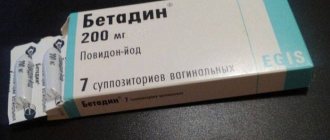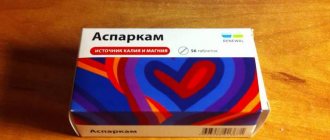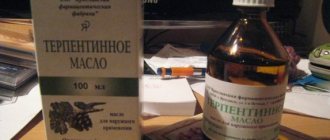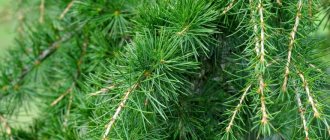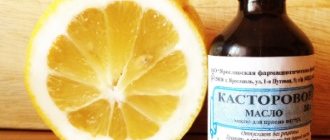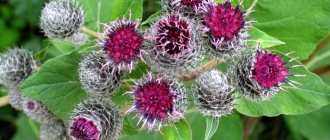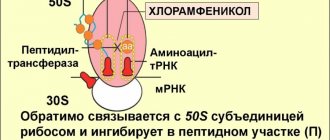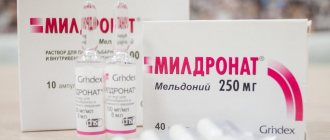Camphor oil is a natural preparation for external use with a pronounced local anesthetic and irritating effect. Camphor oil is also prescribed for subcutaneous and parenteral administration.
Active ingredient: camphor oil solution.
Manufacturer of the drug: in Russia Dalkhimfarm, Kaliningrad Pharmaceutical Factory, Moscow Pharmaceutical Factory, Krasnodar Pharmaceutical Factory, Pyatigorsk Pharmaceutical Factory, Astrakhan Pharmaceutical Factory, Ecolab CJSC, Tula Pharmaceutical Company, Iodine Technologies and Marketing, Tatkhimfarmpreparaty.
Release form
An oily solution of camphor 10% for external use has a yellowish tint and a characteristic odor. The oil is available in 30, 40, 50 and 100 ml bottles in dark glass. Bottles can be produced only with instructions, or can be packaged in cardboard boxes; the specifics of release depend on the manufacturer.
Camphor oil 20% is an oily liquid with a characteristic odor, transparent or light yellow in color. The solution is packaged in ampoules of 1 and 2 ml, 10 ampoules in 1 cardboard package.
How to use oil correctly?
The scope of application of camphor oil in folk medicine is diverse. The product is used as a primary or auxiliary method of treating diseases associated with various internal systems. Due to the high concentration of components included in this oil, it can only be used externally. It is not suitable for internal use.
Examples of the use of camphor oil in folk medicine:
- remedy for the runny nose (in one container, combine a teaspoon of camphor oil, propolis tincture and any vegetable oil, mix the ingredients thoroughly, instill the remedy into the nose, three drops in each nostril, repeat the procedure three times a day until the patient’s condition improves and the symptoms of a runny nose disappear );
- against ear pain (it is not worth putting oil into the ears, it can be used to make lotions, which should be applied to the area around the ear, repeat the procedure until the condition improves and the symptoms of the disease disappear);
- to strengthen the immune system and treat colds (ten drops of camphor oil should be added to the bath, the procedure should be repeated daily when treating colds or several times a month as a prophylactic);
- against keloid scars (soak a bandage or gauze in camphor oil, apply the preparation to the skin and secure with a piece of fabric, the procedure takes several hours, it is recommended to make compresses daily for one month);
- a remedy for a prolonged cough (before going to bed, you need to rub the chest and back with slightly warmed camphor oil).
Camphor oil is used for weight loss. To prepare the mixture you will need a liter of water, four tablespoons of blue clay and camphor oil. First you need to dilute the clay in water, and at the last stage add camphor. Apply the preparation to problem areas of the body. To enhance effectiveness, it is recommended to additionally wrap the compress with plastic wrap and lie under a blanket. The procedure time is at least one hour. The clay mass is washed off with water. The procedures must be repeated regularly.
Therapeutic effect of the drug
When applied externally, camphor oil has a pronounced antimicrobial, analgesic, local irritant, and anti-inflammatory effect. When administered subcutaneously, it helps stimulate the respiratory and vasomotor center of the medulla oblongata. Metabolic processes in the myocardium improve, the sensitive reflex of the sympathetic nerves increases. There is an improvement in the tone of the veins, increased coronary blood flow, blood flow to the heart, brain and lungs. When excreted from the body through the lungs, it simultaneously promotes the production of sputum.
Using camphor oil for the face
Camphor oil has the following effects:
- treats acne;
- reduces shine:
- smoothes wrinkles;
- makes acne scars less noticeable;
- improves complexion;
- tightens pores.
The product is absolutely not suitable for sensitive skin. Recommended for oily, dull skin with enlarged pores and acne-prone skin.
Mask for dark circles under the eyes
Ingredients:
- a bunch of parsley;
- 1 tsp. grape oil;
- 2 drops of camphor oil.
Grind the parsley in a blender. For the recipe you will need 2 teaspoons of gruel. Mix with oils. Apply thickly to the area under the eyes. Lie down with the mask for 15 minutes. Gently remove with a cotton pad, then wash with cool water. Avoid contact with eyes.
The product relieves puffiness, resolves bruises, and removes under-eye areas.
For pigment spots
Ingredients:
- 2 drops of camphor oil;
- a teaspoon of sea buckthorn oil.
Rub the mixture of oils into the skin on areas with pigmentation at night. Camphor has a lightening effect, which helps remove freckles and age spots.
Pharmacokinetics and pharmacodynamics
Camphor oil is a herbal preparation. The active substance is extracted from the wood of the tropical camphor tree. When used externally, the oil has a pronounced anti-inflammatory, analgesic, antibacterial, drying and local irritant effect. It stimulates the sensitive nerve endings of the skin, improving the trophism of organs and tissues at the reflex level.
When administered subcutaneously, it helps stimulate the respiratory and vasomotor center of the medulla oblongata. Metabolic processes in the myocardium improve, the sensitive reflex of the sympathetic nerves increases. There is an improvement in the tone of the veins, increased coronary blood flow, blood flow to the heart, and blood circulation in the brain and lungs. Excreted from the body through the lungs, it promotes the separation of sputum.
When administered subcutaneously, camphor oil overcomes the placental barrier and the blood-brain barrier and is excreted in breast milk.
The drug is excreted 70% by the kidneys, 20% by the lungs, 10% by the bile. When used externally, absorption is quite low; no data are provided on the pharmacokinetics of camphor oil for external use.
How to maintain the beauty of your hair?
In recent years, the problem of hair loss has become very urgent; already in their twenties, many young people (boys and girls) risk being left without beautiful “hair” on their heads - for some, this problem manifests itself with psoriasis.
All this is the result of poor ecology, nutrition and medicinal effects of drugs. Camphor, contained in masks or shampoos, hair care balms, strengthens the hair roots, deodorizes the scalp, restores balance in the functioning of the sebaceous glands, and nourishes it.
A mask for oily hair made from one egg yolk, a couple of tablespoons of water and a few drops of oil will remove excess oily shine, moisturize the skin and normalize the functioning of the glands. You need to apply this mask for literally two to three minutes (can be on wet or dry hair), and then rinse with water.
When the scalp is very irritated (itching, dandruff occurs) - a common occurrence for those with dry hair type, you should prepare a mask based on yolk (1 piece), almond oil (tablespoon), camphor oil (five drops) with the addition of oil tea tree (three drops). Apply the product to washed hair and then rinse with warm water. The time for this procedure is very limited - only five to seven minutes from the appearance of the first signs of discomfort.
For hair that is damaged and has begun to fall out, we recommend a restorative mask of camphor oil (one teaspoon) and lemon juice (from one fruit), applied for an hour, it will activate the vitality of the hair follicles and your hair will begin to grow. The procedures must be continued for two weeks.
There is another remedy that will allow your hair to gain strength and grow faster.
Compound:
- egg yolk (1 piece);
- few sesame seeds (tablespoon);
- hot pepper tincture (one teaspoon);
- camphor (half a teaspoon).
The finished product is rubbed into the scalp, covered with a plastic bag and left for half an hour. After the time has expired, the mask must be washed off with warm water and shampoo. The course consists of 10-12 procedures, every three to five days.
Indications for use
Camphor oil 10% is prescribed in the following cases:
- during inflammatory processes in muscle tissue;
- for neuralgia;
- as a prophylactic against bedsores;
- for rheumatism;
- for arthritis;
- for sciatica;
For cosmetic purposes, camphor oil is used to strengthen, grow hair and eliminate excess fat. The solution exhibits an anti-inflammatory and drying effect.
Camphor oil 20% for injection is prescribed for the following diseases:
- heart failure;
- collapse;
- depression of the respiratory center due to infectious diseases (pneumonia);
- poisoning with opioid analgesics;
- poisoning with sleeping pills;
- productive cough with heavy mucus production.
Chemical composition
The anti-inflammatory, wound-healing, antiseptic and analgesic properties of camphor oil are due to the components included in its composition and their high concentration.
The active ingredient in the product is camphor, and sunflower oil is used as an auxiliary element. There are two types of camphor oil - white and brown. In medical practice and cosmetologists, the first type is most often used.
The composition of camphor oil includes the following components:
- camphor;
- camphene;
- limonene;
- cineole;
- pinene;
- safrole;
- bisabolol;
- phellandrene.
Mode of application
I use camphor oil for external use to treat the musculoskeletal system in the form of compresses. Moisten a clean gauze cloth with oil and apply it to the sore spot. The napkin is covered with cellophane and bandaged. This compress is kept for a day, then it needs to be changed.
To treat injuries, tumors, purulent wounds and dislocations, lotions with camphor oil are made. After 3-4 days, the pain goes away.
For children, camphor oil is prescribed in the form of compresses and rubbing.
To prevent diaper rash and bedsores, the patient’s body after hygiene procedures is lubricated with oil using massage movements.
To treat a productive cough, it is recommended to take the oil orally, four drops with milk twice a day.
The oil is widely used in cosmetology. To strengthen hair, camphor oil is added to homemade shampoos, conditioners and masks. Camphor oil is applied to eyelashes and eyebrows to strengthen and improve their growth. This product perfectly deodorizes, whitens and degreases the skin.
Oil for injection is administered subcutaneously to children under 1 year of age, 0.5-1 ml. From 1 year to 2 years 1 ml, from 3 to 6 years – 1.5 ml, from 7 to 9 years – 2 ml, from 10-14 years – 2.5 ml. Adults are administered subcutaneously 1-2 ml every 2 or 3 hours or 4-5 ml 1 or 2 times a day. Before administration, it is recommended to warm the solution to normal body temperature.
What does it help with?
Camphor oil has numerous beneficial properties, which have been used in folk and traditional medicine for many decades. The product can be used as a preventive measure or in the complex treatment of specific diseases.
The components included in its composition normalize the performance of internal organs, the musculoskeletal system, the cardiovascular system and eliminate a number of dermatological problems.
Here's what camphor oil is used to treat:
- bronchial asthma;
- various forms of neuroses;
- arthritis;
- arrhythmia;
- inflammation of muscle tissue;
- ear pain;
- rheumatism;
- bronchitis;
- sciatica;
- myalgia;
- gout;
- prevention of the development of bedsores;
- respiratory diseases.
Cautions and Recommendations
Camphor oil is not recommended for children under 2 years of age, since oil vapors are easily and quickly absorbed by the child’s skin and mucous membranes, which can cause poisoning. It is strictly forbidden to use camphor oil in children with epilepsy, as the drug can provoke seizures.
Since camphor oil penetrates into breast milk and overcomes the placental barrier and the blood-brain barrier, the drug must be used with extreme caution during lactation and pregnancy and only on the recommendation of a doctor.
Contraindications
Treatment with camphor oil should not be prescribed to a patient with hypersensitivity to the drug or with epilepsy (subcutaneous administration). External use of camphor oil is contraindicated in case of violations of the integrity of the skin.
Despite widespread recommendations to instill camphor oil into the ear, it is not recommended to do this - due to the risk of burns, hearing impairment, and aseptic inflammation.
Camphor oil should not be prescribed to children under two years of age. Oil vapors are easily absorbed by the child’s mucous membranes and skin, which can cause poisoning. Camphor oil is especially contraindicated for children suffering from epilepsy - the oil and products containing it can provoke an epileptic seizure and convulsions.
Side effects
According to research and consumer comments, camphor oil may exhibit the following side effects:
- allergic reactions in the form of rash, itching, urticaria, burning at the site of application;
- with subcutaneous administration, headaches, dizziness, oleogranuloma at the injection site, and fat embolism may occur if oil enters the vessel.
Reviews
In general, reviews of camphor oil are very good.
People note its versatility at a very low price.
The disadvantages include a strong smell that is not pleasant to everyone, and also the fact that it cannot be found in every pharmacy (but in many).
The large number of side effects and contraindications is also scary, but if you follow all the advice, you can easily avoid all the unpleasant moments, and the oil will only bring you benefits.
Anything to add? Want to share your experience? Feel free to write comments!
Perhaps you will be able to help someone, save someone, or dispel doubts.
pharmachologic effect
The drug in question has an incredibly wide spectrum of action, including anti-inflammatory, antimicrobial, and analgesic (when applied topically). The instructions for use call camphor oil one of the most effective means for improving blood flow in certain parts of the body. After all, this substance actively acts on nerve endings located in the skin, and also effectively dilates blood vessels, which helps improve blood circulation and oxygen supply to tissues.
